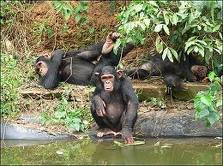Before you travel to Uganda for your Trip, you have to plan it adequately which includes booking your Air ticket, accomodation, what to take for health and safety and also any other neccessary requirements for your trip. Whenever you travel to Uganda and whatever your budget, you will find suitable accomodation for yourself. Most towns have a good variety of moderately priced and budget hotels, even in the smallest village you will find where to stay for a dollar or so.
In Uganda, you can find these kinds of accomodation whereever you will be in the country:
- Upmarket Accomodation: This is only available in major towns and tourist centres. This category includes hotels, lodges and resorts accored a two- to five-star ranking internationally. They cater for intenational leisure and modern accomodation with en-suite facilities. This is the category to look at if cost isn't an issue to you but all you want is standard accomodation you would expect at home.
- Moderate Accomodation: This category embraces those hotels that can't be classified as Upmarket, for one reason or other, but are also expensive, decent and of standard. Mainly they are superior local hotels that charge considerably lower rates than Upmarket competitors. This is the category to look at if you are travelling on a limited but not on low budget though don't expect a luxurious standard of accomodation.
- Budget Accomodation: This category embraces hotels generally aimed at the local market, though usually clean and comfortable, a decent restuarant attached and English-speaking staff. This is the category to look at if you are on a limited budget travel.
- Shoestring Accomodation: This category embraces a small number of establishments aimed specifically at backpackers and mainly consists of local guesthouses. Guesthouse standards tend to vary widely both within towns and between management, but prices are more of the smae. This category is suitable for travelers who want cheap accomodation, irrespective of quality.
- House Shortstays: This category mainly embraces residential homes or apartments strictly meant for shortstay travelers. They are nice homes in the city subburbs at moderately lower prices per month. Accomodation is available on a timely booking before you land in the country through travel agents locally.



































